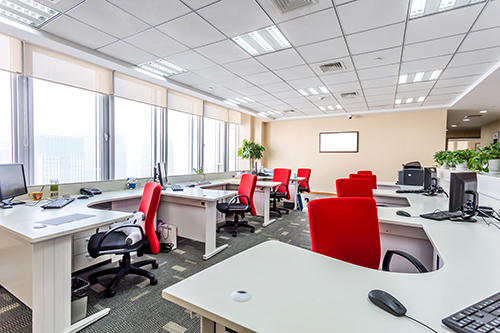
Office space looks different for every company, and there’s no right or wrong way to create a workplace layout. However, if you’re interested in changing your layout or want to learn about different options, check out these various types of office spaces to consider. You may find a new layout that will work for your business!
Traditional Office Space
Traditional office space is one of the most convenient ways of housing a company because it comes with customary features. In these spaces, features typically include:
- Areas for cubicles.
- A Breakroom.
- A Mailroom.
- Conference rooms.
- Private offices.
In traditional layouts, employees work in cubicles and managers or executives work in private offices. Businesses such as law firms, accounting firms, or other professional services use this office layout.
Shared Office Space
To reduce office costs, shared office environments allow multiple organizations to share a single large office space. Although this layout may sound overwhelming, companies with complementary organizations can use this as a networking opportunity. For example, marketing and advertising agencies can share clients or partner with larger campaigns in these spaces.
Creative Office Space
Creative office space is a fast-growing trend for many workplaces because it fosters a collaborative environment. Design features include open floor plans with no cubicles, group workspaces, and large lounge areas. Creative office space is perfect for teamwork because it has few barriers that close employees off from one another. Generally, start-up firms, advertising agencies, and creative businesses focus on adopting this workplace layout.
Prefabricated Modular Office
Businesses with limited resources to remodel an office building, or businesses that need temporary space, should consider prefabricated modular offices. Companies can place modular rooms inside existing warehouses to create more workspaces! And one of the advantages of a prefabricated environmental room is that they’re versatile. Business owners can add furniture and equipment workers need to perform their job duties.
Remote Office Space
Among the various types of office spaces to consider, remote offices are a great choice for small and large businesses. Remote work allows employees to work from home without traveling to an office space. With the absence of travel and typical office disruptions, remote work improves productivity and enables work-life balance. In addition, software programs like Microsoft Teams or Zoom permit employee communication through video chat and messaging.

